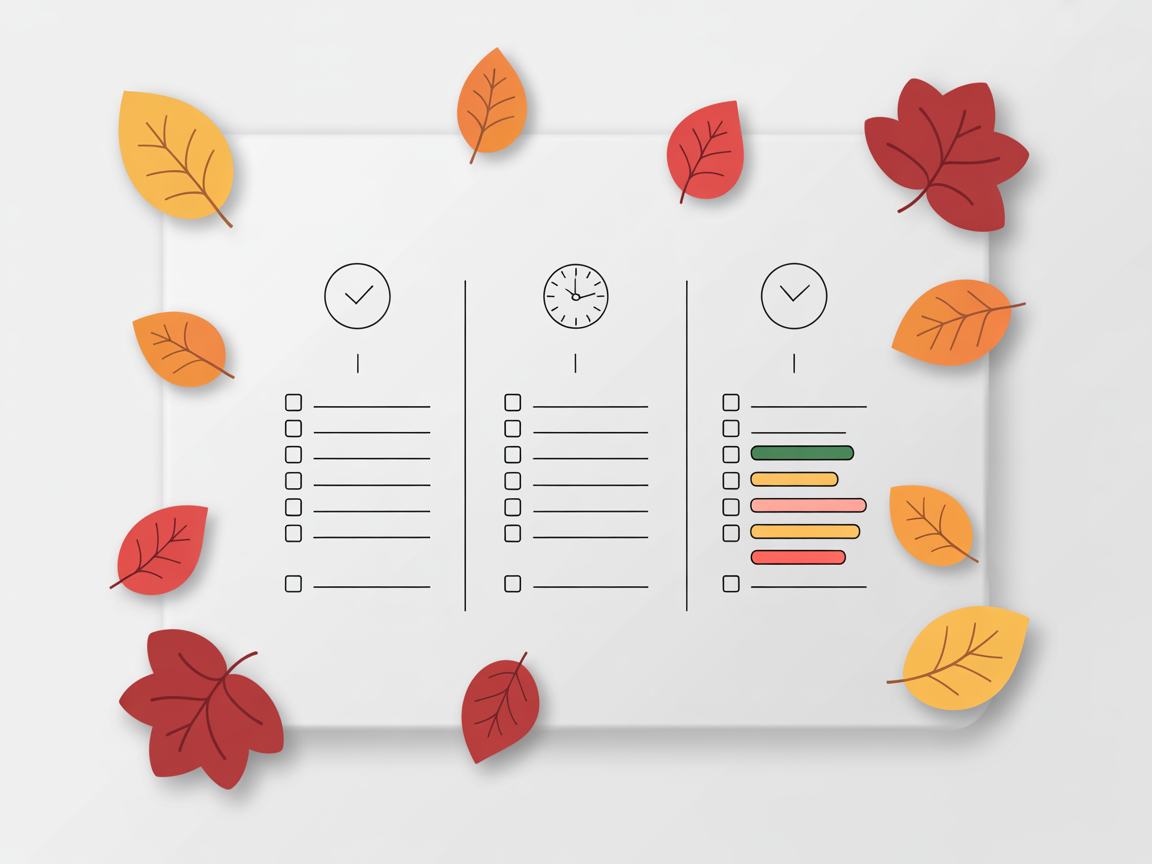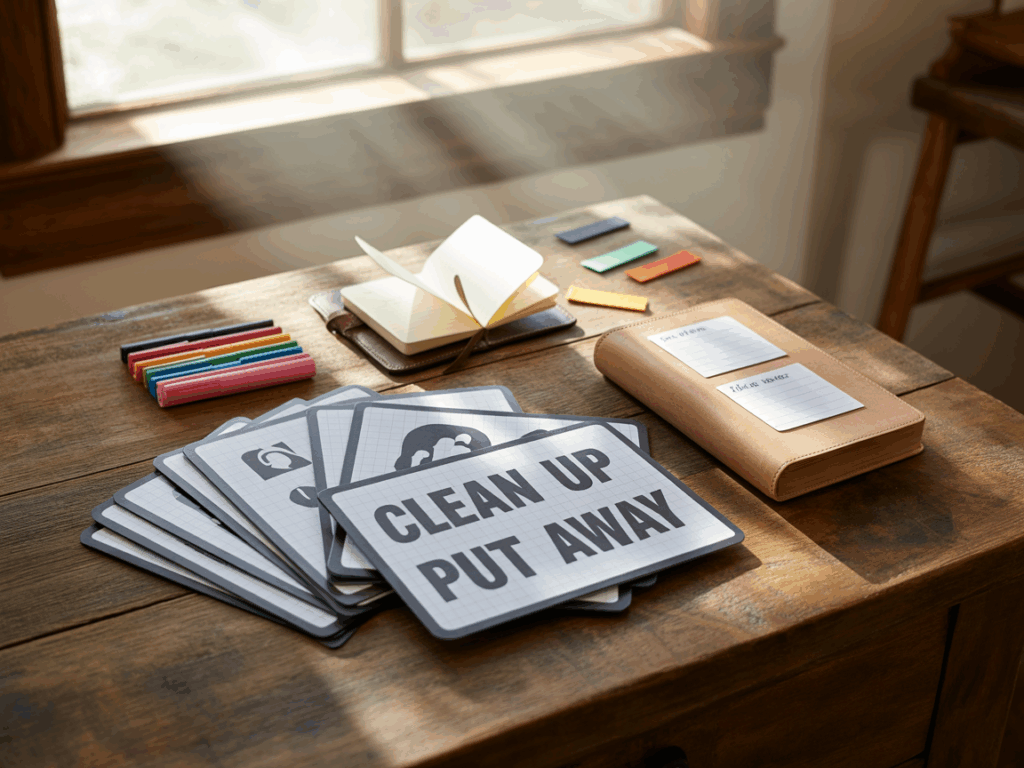Fall is a season of change—shorter days, cooler weather, and for many families, a return to more structured routines after summer’s flexibility. For children receiving Applied Behavior Analysis (ABA) therapy, the start of fall is an excellent time to set or refine routine goals that encourage skill development and promote consistency at home and in the community. This guide will help parents identify meaningful goals, build effective routines, and work closely with their ABA team to support lasting progress.
Why Fall is the Perfect Time to Revisit ABA Goals
Seasonal shifts often bring new opportunities for growth. As schedules stabilize after summer break, families can focus on strengthening daily habits and reinforcing the skills their child is learning in therapy. Fall’s natural structure—with school, extracurricular activities, and predictable events—can help anchor new routines and make progress easier to track.
In ABA therapy, goals are individualized to each child’s needs, but they often benefit from consistent daily practice. By aligning routines with therapy objectives, parents can create an environment where learning continues beyond scheduled ABA sessions.
Step 1: Review Current ABA Goals
Start by reviewing your child’s Individualized Treatment Plan with their ABA therapist or BCBA (Board Certified Behavior Analyst). Ask questions such as:
- Which goals are close to being mastered?
- Which goals need additional support at home?
- Are there any seasonal or developmental opportunities we should address?
This review ensures that the goals you focus on at home align with the strategies your ABA team is using in therapy.
Step 2: Identify Priority Areas for Fall
Not every skill can (or should) be targeted at once. Choose a few priority areas based on your child’s needs and upcoming life events. Common fall goals include:
- Morning routines – Getting dressed, eating breakfast, and preparing for school independently
- Homework routines – Building focus, following instructions, and completing assignments
- Social interactions – Participating in group activities or initiating play with peers
- Self-care skills – Brushing teeth, managing personal belongings, or packing a backpack
- Transition skills – Moving between activities calmly and efficiently
Choosing seasonal goals allows you to connect new skills to real-life situations, making them more meaningful and easier to generalize.
Step 3: Use Visual Supports to Reinforce Routines
Visual aids help children understand expectations and maintain independence. For example:
- Create a visual morning checklist with pictures of each task
- Use a weekly calendar to highlight therapy sessions, school events, and fun activities
- Post step-by-step instructions for self-care tasks in relevant areas (e.g., brushing teeth in the bathroom)
These supports reduce the need for constant verbal reminders and promote confidence in following routines.
Step 4: Break Goals into Manageable Steps
ABA emphasizes breaking complex skills into smaller, teachable steps—a process called task analysis. For example, if the goal is “independent morning routine,” you might break it down into:
- Wake up to alarm
- Get dressed
- Eat breakfast
- Brush teeth
- Pack backpack
By practicing each step individually, your child can master them gradually without feeling overwhelmed.
Step 5: Build Consistency Through Repetition
Repetition helps make routines automatic. Try to maintain consistency in:
- Timing – Complete tasks at the same time each day
- Sequence – Keep the order of activities predictable
- Environment – Use the same space for specific tasks when possible
Predictable patterns make it easier for children to anticipate what comes next, reducing stress and increasing independence.
Step 6: Involve Your ABA Team
Collaboration is key. Share your home-based routine goals with your ABA therapist so they can reinforce them during sessions. They may provide:
- Behavioral strategies to encourage participation
- Reinforcement ideas for motivating your child
- Data collection tools to measure progress
The more consistent the approach between home and therapy, the faster your child will build lasting skills.
Step 7: Reinforce Progress Positively
Positive reinforcement strengthens desired behaviors. This might include verbal praise, high-fives, extra playtime, or small tangible rewards. The key is to make reinforcement immediate and meaningful to your child.
For example, if your child completes their morning routine independently, you might say: “I’m so proud of how you got ready for school today! Let’s choose a special activity after homework.”
Step 8: Adjust Goals as Needed
Routine goals aren’t set in stone. If your child masters a skill quickly, you can increase complexity or introduce a new goal. If a goal proves too challenging, break it down further or add more supports. ABA is designed to be flexible and responsive to the learner’s progress.
Making Routines Enjoyable
Routines don’t have to feel rigid or boring. Incorporate fun elements, such as:
- Playing music during clean-up time
- Using themed stickers to mark completed tasks
- Turning transitions into games (e.g., “Let’s see if we can get to the car before the song ends!”)
Making routines enjoyable increases motivation and engagement, which are essential for long-term success.
Fall Routine Goal Ideas by Age Group
Preschoolers
- Put on shoes independently
- Follow a two-step instruction
- Clean up toys before starting a new activity
Elementary Age
- Pack lunch with minimal assistance
- Complete a homework assignment with visual guidance
- Participate in a group game at recess
Teens
- Manage a personal calendar for school and activities
- Prepare a simple meal
- Practice independent transportation skills (with supervision as needed)
Tracking and Celebrating Success
Documenting progress keeps everyone motivated. You might:
- Use a chart to mark completed routines
- Share updates with your ABA team weekly
- Plan small celebrations for milestones reached
Celebrating success—whether through a favorite activity or verbal acknowledgment—helps reinforce the value of sticking to routines.
Final Thoughts
Setting routine goals in the fall gives your child a fresh opportunity to strengthen important skills and build independence. With a focused plan, consistent practice, and support from your ABA team, routines can become a source of stability, confidence, and success. Remember to start small, stay flexible, and celebrate every step forward.
Contact us to learn how our ABA services can help your family create effective routines for the season ahead.


